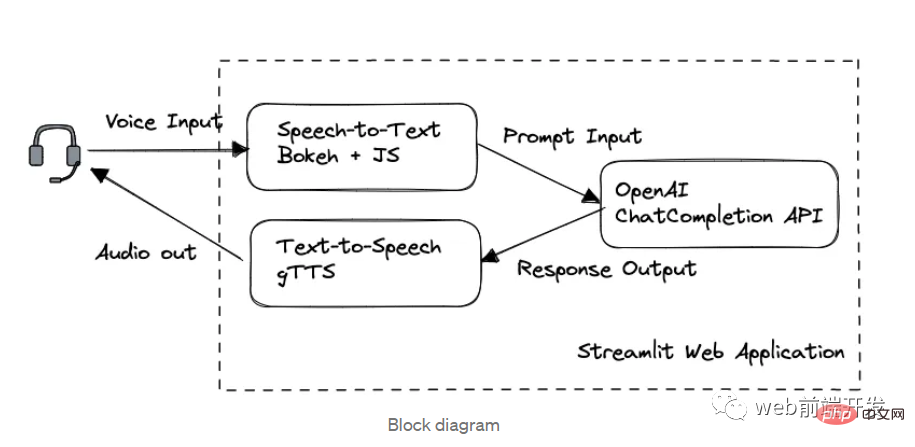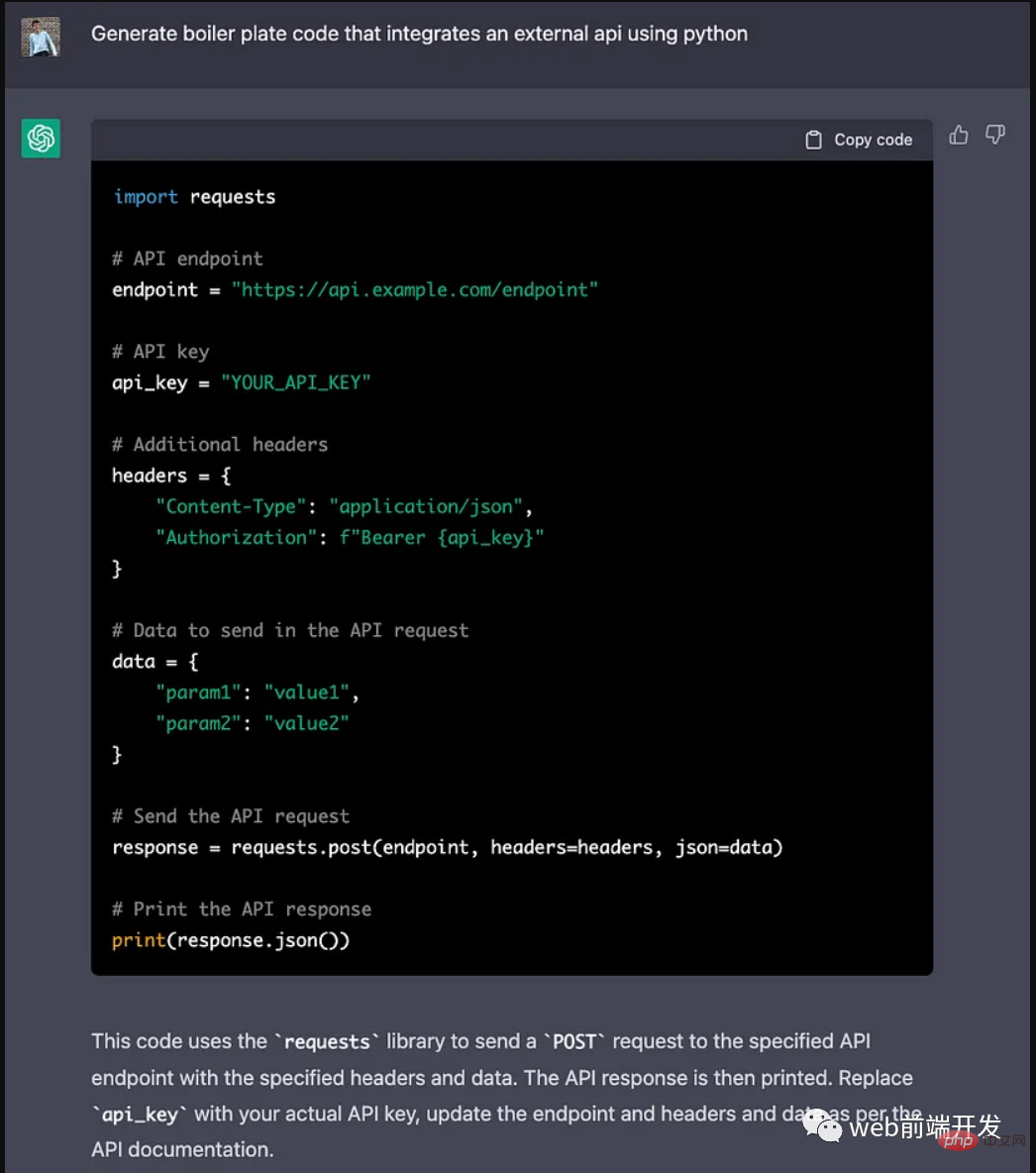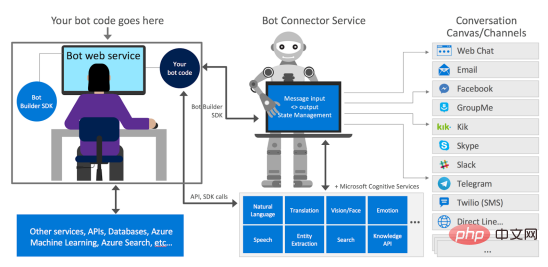Back in 2012, I started coding primarily in JavaScript. I once built a PHP application, a basic CMS and website from start to finish for a local business, and the company decided they wanted to rewrite it and add some functionality.

The project manager wanted me to use .NET, partly because that's what he knew, but also because he wanted the app to feel like a native app Program - No long wait for page refresh or operation action. After some research and prototyping, I convinced my manager that I could do these things using a new JS framework that was just starting to emerge at the time.
The first framework I chose was actually Angular 1. Having built a fairly large app and using FuelPHP's backend before I ran into some issues with the router - it would flicker every time a child route/outlet was re-rendered and it really felt like it was being designed This scenario was not considered at the time.
Later, someone recommended Ruby on Rails Ember to me. After trying it, I thought it worked very well. I also like the idea of both frameworks, I like these community ecologies, and overall it's been very productive compared to the alternatives at the time.
A lot has changed since then - frameworks have emerged one after another and have evolved a lot. The idea that you could build applications with JavaScript in the browser went from somewhat of a fringe to a standard practice. The infrastructure we've built has completely changed, enabling a new set of possibilities.
During this period, there was also considerable competition and conflict among various ideas. Which JavaScript framework to use, how to write CSS, functional vs. object-oriented programming, how to best manage state, which build system or tool is the most flexible and fast, etc. Looking back, it’s funny how we often argue about the wrong things and ignore some forward-looking considerations. Of course, this is also hindsight.
So I wanted to do a retrospective, looking back at the past few decades of JavaScript development to see how far we have come. We can roughly divide it into four main eras. :
- Original era
- The first framework
- Component-centered view layer
- Full stack framework
Each era has its own themes and core contradictions. At the same time, it also wants to learn key lessons and move forward steadily.
Today, the debate continues. Is the web getting too bloated? Does the average website really need to be written in React? Should we even use JavaScript? Of course, the present cannot represent the future, and the existing framework will most likely be replaced in the future. However, it is also based on some existing perspectives to help us move forward.
Original Year
JavaScript was first released in 1995. Like I mentioned above, I started writing JS in 2012, almost 20 years later, near the beginning of what I call the first framework era. You can assume that I might be glossing over a lot of history here, and that this era might be broken up into many sub-eras, each with its own patterns, libraries, build tools, etc.
In other words, I can’t write about things I haven’t experienced. When I started writing front-end applications, the new generation of frameworks was just beginning to mature. Angular.js, Ember.js, Backbone, and more.
Before this, the most advanced technologies were libraries such as jQuery and MooTools. These libraries were important in their day - they helped smooth out the differences in the way browsers implemented JavaScript that were important.
For example, the way IE implements events is completely different from Netscape - bubbling events and capturing events. That's why our standards today finally implement both, but until then we need to use libraries to write code that works on both browsers.
These libraries are mainly used for making small, independent user interface components. Most of the application's business logic is still done through forms and standard HTTP requests - HTML is rendered on the server and served to the client.
There are no build tools to speak of in this day and age, at least that I know of. JavaScript at the time didn't have modules (at least not standard modules), so there was no way to import code. Everything is global, and it's very difficult to organize it.
In this environment, it’s understandable that JS is often viewed as a toy language rather than something you use to write a complete application. The most common thing we did back then was throw in jQuery, write some scripts for some UI widgets, and then that was it.
As time went on and XHR was introduced and popularized, people began to put parts of their UI processes into a page, especially for complex processes that required multiple back-and-forth interactions between the client and server. But most of the application remains on the server.
This is in stark contrast to the situation when mobile apps began to emerge. From the beginning, mobile apps on iOS and Android have been complete applications written in no-nonsense languages™ like Objective C and Java. Additionally, they are completely API driven - all UI logic is on the device and communication with the server is purely in data format. This led to a better user experience and an explosion of mobile apps, leading directly to the debate we have today about whether mobile or the web is better.
Doing all this in JavaScript was initially considered ridiculous. But as time went on, the applications started to become more ambitious. Social networks added chat, DMs, and other real-time features, Gmail and Google Docs showed that equivalent desktop applications could be written in the browser, and more and more companies turned to writing web applications because the web worked everywhere and was more Easy long-term maintenance. This pushed the entire industry forward - it was now clear that JS could be used to write non-trivial applications.
Back then JavaScript didn’t have all the features it has today, everything was global and usually required manually downloading and adding each external library to a static folder. NPM didn't exist yet, modules didn't exist, and JS didn't have half the functionality it has today.
In most cases, each application is customized, each page has different plugin settings, and each plugin has a different system for managing state and rendering updates. In order to solve these problems, the earliest JavaScript framework began to appear.
The First Framework
Around the late 2000s and early 2010s, the first JS frameworks specifically designed for writing complete client-side applications began to appear. Several famous frameworks of this era:
- Backbone.js
- Angular 1
- Knockout.js
- SproutCore
- Ember.js
- Meteor.js
Of course, there are many others, and probably some that are bigger in some circles. These are the ones I remember, mainly because Xiao Ming used them to code and they are relatively popular.
This is a generation framework that is entering uncharted territory. On the one hand, what they were trying to do was very ambitious, and many thought it would never really succeed.
There are many naysayers who argue that Single Page JS Applications (SPAs) are fundamentally worse, and in many ways they're right - client-side rendering means robots can't easily crawl these pages, and Users have to wait a few seconds before the application can even start drawing. Many of these apps are accessibility nightmares and don't work at all if JavaScript is turned off.
On the other hand, we have no experience building complete applications in JS, so there are a lot of competing ideas about the best approach. Most frameworks try to imitate what's popular on other platforms, so almost all of them end up being some iteration of Model-View-*. Model-View-Controller, Model-View-Producer, Model-View-ViewModel and so on. But in the long run, these are not really successful - they are not particularly intuitive, and they become very complicated very quickly.
This was also an era when we really started experimenting with how to compile JavaScript applications. Node.js was released in 2009, and NPM followed in 2010, introducing packages for (server-side) JavaScript.
CommonJS and AMD fight over how to best define JS modules, while build tools like Grunt, Gulp, and Broccoli fight over how to combine these modules into a deliverable final product.
For the most part, these are very general task runner-style tools that can really build anything that just happens to be building JavaScript -- but also HTML, CSS/SASS/LESS, and many other things that go into web applications.
However, we have learned a lot from this era:
- URL-based routing is the foundation. Applications without this routing break the web, so this needs to be accounted for in the framework from the start.
- Extending HTML through a templated language is a powerful abstraction layer. Even though it can be a bit clunky at times, it makes it easier to keep the user interface in sync with state.
- The performance of SPA is very poor, and the web has many additional limitations that native applications do not have. We need to publish all the code over the web, have it JIT, and then run it to launch our application while the local application has been downloaded and compiled, which is a daunting task.
- As a language, JavaScript has a lot of problems, and it really needs to be improved to make things better - frameworks can't do that alone.
- We absolutely need better building tools, modules, and packaging for writing applications at scale.
Overall, this era has been productive. Despite the drawbacks, as the complexity of the application increases, the benefits of decoupling the client from the API are huge, and in many cases the resulting user experience is amazing. Unless there are special circumstances, this era may continue, and we are still iterating on MV* style ideas.
But then an asteroid suddenly appeared, smashing the existing paradigm into pieces, causing a small-scale extinction event, and pushing us into the next era - this asteroid was called React.
Component-centered view layer
I don’t think React invented components, but to be honest, I’m not sure where they first came from. But it goes back at least to XAML in .NET, and that's when web components started to evolve as a specification. Ultimately it didn't matter - once the idea emerged, every major framework adopted it very quickly.
In hindsight, this totally makes sense - extend HTML, reduce long-lived state, bind JS business logic directly to templates (whether it's JSX or Handlebars or Directives).
Component-based applications eliminate most of the abstractions needed to get the job done and significantly simplify the code lifecycle - everything is tied to the component's lifecycle rather than the application's lifecycle Together, this means you have far fewer things to think about as a developer.
However, there was a shift at that time: the framework began to tout itself as a "view layer" rather than a full-blown framework. Instead of solving all the problems required for front-end applications, they focus on solving rendering problems.
Other issues, such as routing, API communication and state management, are left to the user to decide. The famous frameworks of this era include:
- React.js
- Vue.js
- Svelte
- Polymer.js
There are many others. Looking back now, I think this was a popular framework among second generation frameworks because it really did two main things.
- It narrows the scope dramatically. Rather than trying to solve all of these problems upfront, the core of the framework is focused on rendering, and many different ideas and directions can be explored for other features within the broader ecosystem. There are a lot of bad solutions, but there are also good solutions, paving the way for the next generation to pick the best ideas from the cream.
- This makes it easier for us to accept them. Adopting a complete framework to take over your entire web page means rewriting most of your application, which is not possible with existing server-side monoliths. Using frameworks like React and Vue, you can drop small portions of them into existing applications one widget or component at a time, allowing developers to migrate their existing code incrementally.
These two factors have led to the rapid development of the second-generation framework, eclipsing the first-generation framework. From a distance, it all seems to make sense and is a reasonable evolution. But being in it at the time was quite a frustrating experience.
First of all, when we are debating which framework to use at work, or whether we should rewrite our application, we don't often encounter such a framework. Instead, many times it's "It's faster!" or "It's smaller!" or "It's everything you need!".
There is also the debate about functional programming and object-oriented programming, with many people looking to FP as the solution to all our problems. To be fair, these things are true. View-layer-only frames are smaller (at first), faster (at first), and are all you need (if you build or stitch a lot of stuff yourself).
Of course, functional programming patterns solve a lot of problems that plague JavaScript, and I think that, on average, JS is better because of them.
However, the reality is that there is no magic bullet. Applications are still large, bloated, and complex, state is still difficult to manage, and basic issues like routing and SSR still need to be solved.
For many of us, what people seem to want is to abandon a solution that tries to solve all of these problems and replace it with a solution that leaves readers to figure it out for themselves.
In my experience this is also a common practice among engineering groups who will happily embrace this change in order to deliver a new product or feature and then not fund the full development of all those additional features required time.
The result is home-made frameworks built around these view layers, which themselves are bloated, complex, and very difficult to operate.
I think a lot of the problems people have with SPA come from this fragmented ecosystem, which is happening just as SPA usage is exploding. I still often come across a new website that doesn't do routing correctly or handle other small details well, and it's absolutely frustrating.
But on the other hand, the existing first-generation full-service framework does not do a very good job in solving these problems. Part of this is due to a lot of technical debt baggage. The first generation frameworks were built before ES6, before modules, before Babel and Webpack, before we had a lot of things figured out.
Iterative evolution is very difficult, and completely rewriting them, like Angular did with Angular 2, kills their community's momentum.
So developers are in a dilemma when it comes to JavaScript frameworks - either choose an all-in-one solution that's starting to show its age, or jump into the free-for-all and DIY half the framework in hopes of getting the most out of it. good result.
This was very frustrating at the time, but ultimately led to a lot of innovation. The JavaScript ecosystem has evolved very quickly, and a number of other key changes have occurred as these frameworks figure out their best practices.
- Transpilers like Babel become the norm and help modernize the language. Rather than waiting years for features to be standardized, they can be used today, and the language itself starts adding features at a faster, more iterative pace.
- ES modules were standardized so that we finally started building modern build tools around them, such as Rollup, Webpack, and Parcel. Import-based bundling is slowly becoming the norm, even for non-JS resources like styles and images, which greatly simplifies the configuration of build tools, making them leaner, faster, and more comprehensive.
- As more and more APIs are standardized, the gap between Node and web standards is slowly but steadily closing. SSR started to become a real possibility and then something every serious application was doing, but each time it was a custom setup.
- Edge Computing is released, giving JavaScript-based server applications the distribution/response time benefits of SPA (Spas previously typically started loading faster due to being static files on the CDN, Even if they take longer to fully load and end).
At the end of this era, some questions remain. State management and responsiveness were (and still are) thorny issues, even though we have better models than before.
Performance is still a difficult issue, and although things are improving, there are still many, many bloated SPAs out there.
The accessibility situation has also improved, but for many engineering organizations it is still often an afterthought. But these changes paved the way for the next generation of frameworks, which I would say we are now entering.
Full stack framework
Personally, the last framework era has really quietly arrived. I think it's because I've spent the last 4 years or so digging into the internals of Ember's rendering layer, trying to resolve the aforementioned technical debt that affected it as a first-generation framework (still). But it's also because it's more subtle, because all of these third-generation frameworks are built around the view layer frameworks of the previous generation. These frameworks include:
- Next.js (React)
- Nuxt.js (Vue)
- Remix (React)
- SvelteKit (Svelte )
- Gatsby (React)
- Astro (Any)
These frameworks started as the view layer matured and consolidated. Now that we all agree that components are built on top of the core, it makes sense to start standardizing the other parts of the application - routers, build systems, folder structures, etc.
Slowly, these meta-frameworks began to build the same capabilities out of the box as the first-generation all-in-one solutions, cherry-picking the best patterns from their respective ecosystems, and as they matured And incorporate it.
Then they went one step further.
Prior to this, SPA has only focused on the client. SSR is something every framework wants to solve, but only as an optimization, a way to get rendered, and ultimately replaced when the megabytes of JS are finally loaded.
Only one first-generation framework dared to think further, Meteor.js, but its idea of isomorphic JS never really materialized.
But as applications grew in size and complexity, the idea was revisited.
We noticed that it is actually very useful to pair the backend and frontend together, so that you can do things like hide API secrets for certain requests, modify header files when returning the page, Proxy API requests. As Node and Deno implement more and more web standards, and the gap between server-side JS and client-side JS shrinks every year, it's starting to look like it's not such a crazy idea after all. Combine that with edge-computing and amazing tooling, and there's some incredible potential.
The latest generation of frameworks take full advantage of this potential, blending client and server together seamlessly, and I can't stress how amazing this feels. Over the past 9 months of working with SvelteKit, I can’t tell you how many times I’ve sat down and said to myself, “This is what we should be doing all the time.”
Here are some of the tasks I’ve encountered recently, With this setup, these tasks become incredibly easy.
- Adding server-side OAuth to our application so that the authentication token never leaves the server, as well as an API proxy that adds the token when making a request to our API.
- Proxy certain routes directly to our CDN so we can host static HTML pages built in any other framework, allowing users to make their own custom pages (a service we provide for some clients).
- Add a few different one-time API routes when we need to use an external service that requires a key (no need to add a whole new route to our API and coordinate with backend people).
- Moving our use of LaunchDarkly to the server side allows us to load less JS, thus reducing overall costs.
- Proxy our Sentry requests through backend routing so we can catch errors that go unreported due to ad blockers.
And this is just the tip of the iceberg. There are really a lot of cool things about this pattern, the biggest of which is how it reinvigorates the idea of progressive enhancement, leveraging the combined features of the server and client to allow the client to fall back to basic if the user disables JavaScript HTML HTTP.
When I started working in spas, I myself had completely given up on the practice and thought they were the trend of the future, but it's possible that we're going to see a world where it makes a comeback, which is really cool.
These are new features. From experience, I classify these frameworks as new generation frameworks. Problems that were previously difficult or impossible to solve now become trivial, requiring only a slight change in response processing logic.
Reliable performance and user experience come out of the box and don’t require any additional configuration. Instead of building an entire new service, we can add some additional endpoints or middleware as needed. This has been life changing.
I think this generation also resolves some of the major points of conflict between the first and second generation frameworks and their users.
It started with a shift toward zero-configuration terminology, but I think it's ultimately driven by the maturity and stability of the ecosystem around second-generation frameworks, which is also a cultural shift.
Third generation frameworks are now trying to be an all-in-one solution again, trying to solve all the fundamental problems we as front-end developers need to solve - not just rendering.
Now more than ever it feels like the community is united in addressing all the many issues plaguing SPA and, importantly, solving them together.
Where are we going next?
Overall, I think the JavaScript community is moving in the right direction. We have finally developed mature solutions for building complete applications from scratch that are not "just a view layer".
We are finally starting to compete on the same starting line as native application SDKs, providing a complete toolkit that works out of the box.
We still have a lot of work to do in this area. Accessibility has long been an afterthought in the SPA world, and outside of GraphQL I still think data stories could use some work (like it or not, most of the web still runs on REST).
But the trend is right, and if we continue to move in the direction of shared solutions, I think we can solve these problems in a better way than before.
I'm also excited about the potential behind further elevating these patterns into the web platform itself. Web components are still being quietly iterated on, working on issues like SSR and getting rid of global registration, which will make them more compatible with these third-generation frameworks.
In the other direction, WebAssembly can iterate on this pattern in an incredible way. Imagine being able to write a full-stack framework in any language.
Isomorphic languages like Rust, Python, Swift, Java, etc. can finally reduce the barrier between front and backend to almost zero -- just a little HTML template at the edge of your system (which ironically makes We've almost come full circle, albeit with a better user experience).
My biggest hope here is that we are moving past the era of fragmentation and the era of new JS frameworks every day. Freedom and flexibility breed innovation, but they also lead to confusing, disconnected, and often fundamentally broken experiences on the web.
When developers have to choose between 50+ options and piece them together with limited resources and tight deadlines, this is the experience we see, and it makes sense. Some apps are fast, consistent, reliable, and fun to use, while others are frustrating, confusing, slow, and broken.
If we could give developers tools that were easier to use and did the right things by default, maybe the average website would be better and the average experience would be smoother.
It won't fix every website -- no amount of code can fix poor UX design. But it will lay a common foundation, so every website starts out a little better and every developer has more time to focus on other things.
The above is the detailed content of Four eras of JavaScript frameworks. For more information, please follow other related articles on the PHP Chinese website!
 Nuitka简介:编译和分发Python的更好方法Apr 13, 2023 pm 12:55 PM
Nuitka简介:编译和分发Python的更好方法Apr 13, 2023 pm 12:55 PM译者 | 李睿审校 | 孙淑娟随着Python越来越受欢迎,其局限性也越来越明显。一方面,编写Python应用程序并将其分发给没有安装Python的人员可能非常困难。解决这一问题的最常见方法是将程序与其所有支持库和文件以及Python运行时打包在一起。有一些工具可以做到这一点,例如PyInstaller,但它们需要大量的缓存才能正常工作。更重要的是,通常可以从生成的包中提取Python程序的源代码。在某些情况下,这会破坏交易。第三方项目Nuitka提供了一个激进的解决方案。它将Python程序编
 我创建了一个由 ChatGPT API 提供支持的语音聊天机器人,方法请收下Apr 07, 2023 pm 11:01 PM
我创建了一个由 ChatGPT API 提供支持的语音聊天机器人,方法请收下Apr 07, 2023 pm 11:01 PM今天这篇文章的重点是使用 ChatGPT API 创建私人语音 Chatbot Web 应用程序。目的是探索和发现人工智能的更多潜在用例和商业机会。我将逐步指导您完成开发过程,以确保您理解并可以复制自己的过程。为什么需要不是每个人都欢迎基于打字的服务,想象一下仍在学习写作技巧的孩子或无法在屏幕上正确看到单词的老年人。基于语音的 AI Chatbot 是解决这个问题的方法,就像它如何帮助我的孩子要求他的语音 Chatbot 给他读睡前故事一样。鉴于现有可用的助手选项,例如,苹果的 Siri 和亚马
 ChatGPT 的五大功能可以帮助你提高代码质量Apr 14, 2023 pm 02:58 PM
ChatGPT 的五大功能可以帮助你提高代码质量Apr 14, 2023 pm 02:58 PMChatGPT 目前彻底改变了开发代码的方式,然而,大多数软件开发人员和数据专家仍然没有使用 ChatGPT 来改进和简化他们的工作。这就是为什么我在这里概述 5 个不同的功能,以提高我们的日常工作速度和质量。我们可以在日常工作中使用它们。现在,我们一起来了解一下吧。注意:切勿在 ChatGPT 中使用关键代码或信息。01.生成项目代码的框架从头开始构建新项目时,ChatGPT 是我的秘密武器。只需几个提示,它就可以生成我需要的代码框架,包括我选择的技术、框架和版本。它不仅为我节省了至少一个小时
 解决Batch Norm层等短板的开放环境解决方案Apr 26, 2023 am 10:01 AM
解决Batch Norm层等短板的开放环境解决方案Apr 26, 2023 am 10:01 AM测试时自适应(Test-TimeAdaptation,TTA)方法在测试阶段指导模型进行快速无监督/自监督学习,是当前用于提升深度模型分布外泛化能力的一种强有效工具。然而在动态开放场景中,稳定性不足仍是现有TTA方法的一大短板,严重阻碍了其实际部署。为此,来自华南理工大学、腾讯AILab及新加坡国立大学的研究团队,从统一的角度对现有TTA方法在动态场景下不稳定原因进行分析,指出依赖于Batch的归一化层是导致不稳定的关键原因之一,另外测试数据流中某些具有噪声/大规模梯度的样本
 摔倒检测-完全用ChatGPT开发,分享如何正确地向ChatGPT提问Apr 07, 2023 pm 03:06 PM
摔倒检测-完全用ChatGPT开发,分享如何正确地向ChatGPT提问Apr 07, 2023 pm 03:06 PM哈喽,大家好。之前给大家分享过摔倒识别、打架识别,今天以摔倒识别为例,我们看看能不能完全交给ChatGPT来做。让ChatGPT来做这件事,最核心的是如何向ChatGPT提问,把问题一股脑的直接丢给ChatGPT,如:用 Python 写个摔倒检测代码 是不可取的, 而是要像挤牙膏一样,一点一点引导ChatGPT得到准确的答案,从而才能真正让ChatGPT提高我们解决问题的效率。今天分享的摔倒识别案例,与ChatGPT对话的思路清晰,代码可用度高,按照GPT返回的结果完全可以开
 17 个可以实现高效工作与在线赚钱的 AI 工具网站Apr 11, 2023 pm 04:13 PM
17 个可以实现高效工作与在线赚钱的 AI 工具网站Apr 11, 2023 pm 04:13 PM自 2020 年以来,内容开发领域已经感受到人工智能工具的存在。1.Jasper AI网址:https://www.jasper.ai在可用的 AI 文案写作工具中,Jasper 作为那些寻求通过内容生成赚钱的人来讲,它是经济实惠且高效的选择之一。该工具精通短格式和长格式内容均能完成。Jasper 拥有一系列功能,包括无需切换到模板即可快速生成内容的命令、用于创建文章的高效长格式编辑器,以及包含有助于创建各种类型内容的向导的内容工作流,例如,博客文章、销售文案和重写。Jasper Chat 是该
 为什么特斯拉的人形机器人长得并不像人?一文了解恐怖谷效应对机器人公司的影响Apr 14, 2023 pm 11:13 PM
为什么特斯拉的人形机器人长得并不像人?一文了解恐怖谷效应对机器人公司的影响Apr 14, 2023 pm 11:13 PM1970年,机器人专家森政弘(MasahiroMori)首次描述了「恐怖谷」的影响,这一概念对机器人领域产生了巨大影响。「恐怖谷」效应描述了当人类看到类似人类的物体,特别是机器人时所表现出的积极和消极反应。恐怖谷效应理论认为,机器人的外观和动作越像人,我们对它的同理心就越强。然而,在某些时候,机器人或虚拟人物变得过于逼真,但又不那么像人时,我们大脑的视觉处理系统就会被混淆。最终,我们会深深地陷入一种对机器人非常消极的情绪状态里。森政弘的假设指出:由于机器人与人类在外表、动作上相似,所以人类亦会对
 如何使用Azure Bot Services创建聊天机器人的分步说明Apr 11, 2023 pm 06:34 PM
如何使用Azure Bot Services创建聊天机器人的分步说明Apr 11, 2023 pm 06:34 PM译者 | 李睿审校 | 孙淑娟信使、网络服务和其他软件都离不开机器人(bot)。而在软件开发和应用中,机器人是一种应用程序,旨在自动执行(或根据预设脚本执行)响应用户请求创建的操作。在本文中, NIX United公司的.NET开发人员Daniil Mikhov介绍了使用微软Azure Bot Services创建聊天机器人的一个例子。本文将对想要使用该服务开发聊天机器人的开发人员有所帮助。 为什么使用Azure Bot Services? 在Azure Bot Services上开发聊


Hot AI Tools

Undresser.AI Undress
AI-powered app for creating realistic nude photos

AI Clothes Remover
Online AI tool for removing clothes from photos.

Undress AI Tool
Undress images for free

Clothoff.io
AI clothes remover

AI Hentai Generator
Generate AI Hentai for free.

Hot Article

Hot Tools

Dreamweaver Mac version
Visual web development tools

VSCode Windows 64-bit Download
A free and powerful IDE editor launched by Microsoft

MinGW - Minimalist GNU for Windows
This project is in the process of being migrated to osdn.net/projects/mingw, you can continue to follow us there. MinGW: A native Windows port of the GNU Compiler Collection (GCC), freely distributable import libraries and header files for building native Windows applications; includes extensions to the MSVC runtime to support C99 functionality. All MinGW software can run on 64-bit Windows platforms.

PhpStorm Mac version
The latest (2018.2.1) professional PHP integrated development tool

SAP NetWeaver Server Adapter for Eclipse
Integrate Eclipse with SAP NetWeaver application server.







